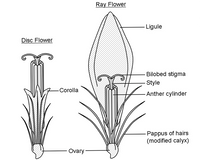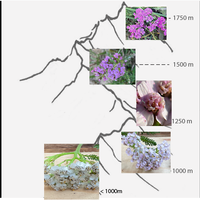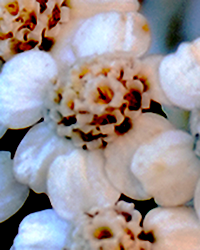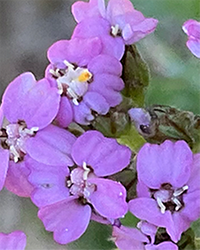S06 - Achillea (millefolium)
We are currently following a phenomenon in the plant
Achillea millefolium. In the Swiss Pre-Alps and Alps, this phenomenon can be found everywhere. The inflorescences of this plant are bright white if you are below 1000 meters altitude. If you move at the altitude of 1000 meters (threshold high), you will find plants within a population whose ray florets are slightly purple. If you go to 1300 meters, this phenomenon is more frequent. It is also possible that individual plants have colored disk florets. The ray florets then remain white. If you climb even higher to 1700 meters, you will find plants whose inflorescences are colored deep purple, regardless of the flower structure. It is a gradual transition from white to deep purple depending on the altitude and thus also depending on the UV irradiation of the plants.
(from literature)
Gradual increase of anthocyanin pigments in the whole inflorescences starting from an altitude of 1000 m above sea level (sunny south-slopes).
In 1300m plant whose disc flowers are colored purple, the ray florets are not colored. Young disc florets start with a purple coloration, wich changes
back to white with age. (Pushmi-Pulyu effect).
In showing this one can say that the change in pigmentation of the flowers is organized.
09-22 r
But the trend points in another direction:
The number of disc flowers will reduce, and their corolla will be white while the ligule of the ray flower will become a vivid blue-violet.
The white inflorescence has 8-15 disc flowers
the blue-violet shape has 2-4 disc flowers.
So there is a considerable difference between these two shapes. The white forms and the Lila forms are frequent. The blue-violet shapes found in altitudes above 1400 m are rare.
Inflorescences of the same plant at time 0 and after three days. Clearly differ the inflorescences in coloration depending on the age of the flowers (Pushmi-Pulyu-effect also here).







